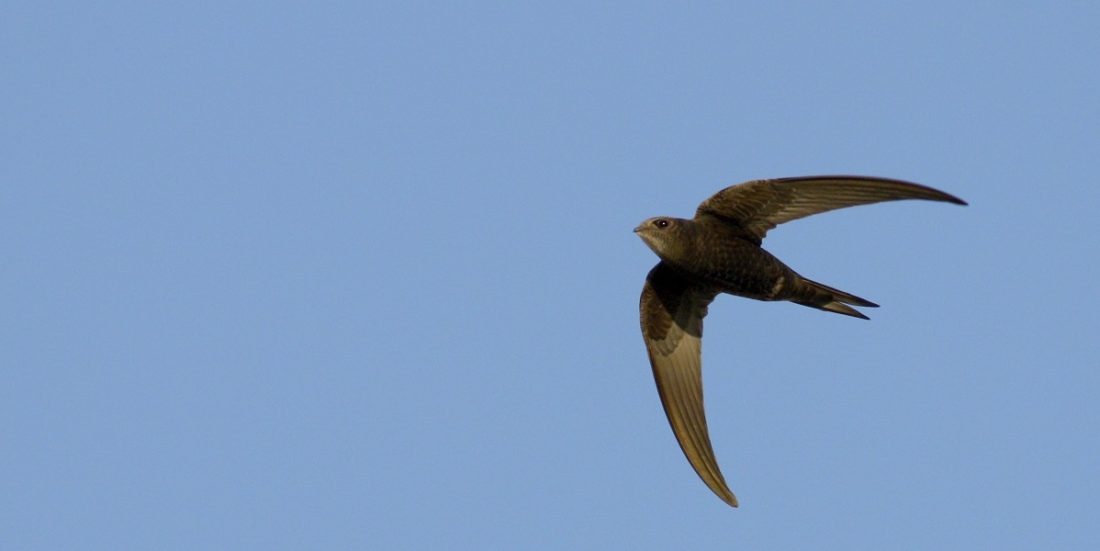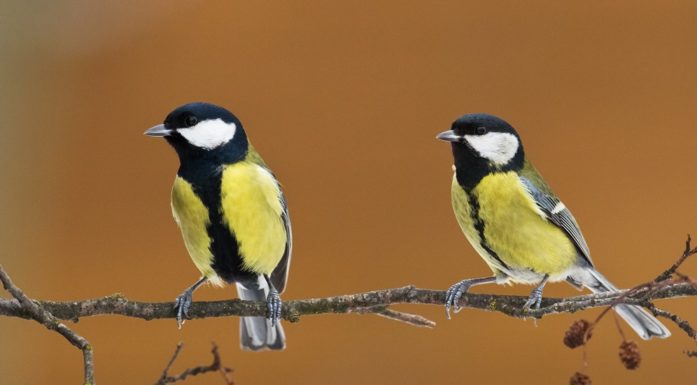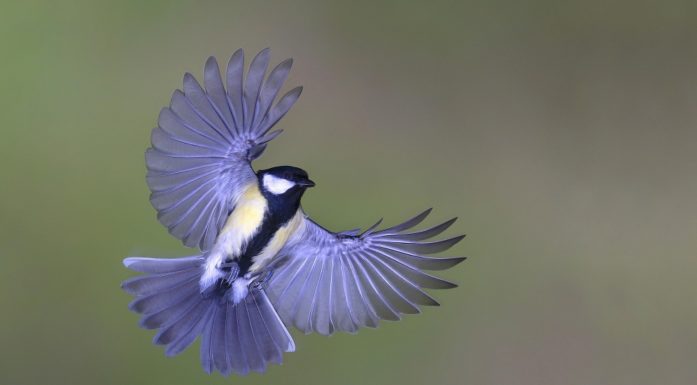A life in the air for birds that rarely land
Common swifts are now slicing through the sky in Norway. Every year they fly the equivalent of four or five times around the Earth to return to their nesting areas.
COMMON SWIFTS: The ringing swii-rii cry from swifts slicing the air on high is one of the sure signs of the transition to summer in Norway. These migrants arrive in northern Europe right around Norway’s May 17th Independence Day, but won’t stay long.
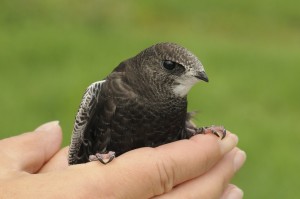
Common swifts are completely blackish-brown except for a bright spot on the throat. Their large eyes are located in depressions on their head to reduce air resistance. The beak is short but wide at the base so they can scoop up flying insects and spiders into their huge gape. Common swifts have “grasping feet”, with all four toes facing forward and curved, sharp claws that are well suited to clinging to vertical walls. Their legs are so short that the birds cannot stand or take off from the ground. Because of their long wings, swifts have to be able to land directly in the nest opening. Photo: Thinkstock
The dark birds, with their long curved wings directly extended from their bodies, are reminiscent of swallows, but considerably larger.
Around the world multiple times
Common swifts spend more time on the wing than any other bird, with the possible exceptions of albatrosses and shearwaters.
They gather all their food from the air and can even sleep, preen themselves and mate while in flight. They also gather much of their nesting material in the air.
It is estimated that a swift flies about 200,000 kilometres per year, which is the equivalent of flying around the Earth between four and five times.
At night, many swifts fly around at an altitude between 1,000 and 3,000 metres, mostly at a speed of about 30 km/h. When foraging for food they fly faster yet, anywhere between 30 and 90 km/h.
Perfectly adapted
No other bird is so superbly adapted to life on the wing. The common swift’s most important adaptation is probably that their wings have a very long hand section and a short arm section, which gives the wings their stiffness and curvature.
The wingspan of the common swift is usually 40-50 cm, which is long relative to its body length of 17 cm and weight of 40 grams.
Thanks to their streamlined form, the flight of common swifts is significantly more energy efficient than that of most other birds. The body is streamlined, and even their eyes are set in depressions on the side of the head to reduce drag.
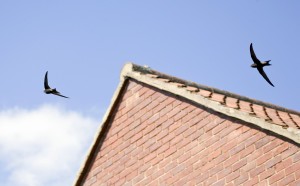
Common swifts often hunt in groups. They are also often seen with swallows, but swifts are condiderably larger and never hold their wings close to their body like swallows do. Photo: Thinkstock
An unusual detail is that swifts’ salivary glands increase considerably in volume during the nesting season. The birds use the gelatinous saliva to glue together nesting material collected in flight and to pack their insect catch into a food-ball, or bolus, for their young.
Each bolus can contain up to 1,000 insects and weighs between one and two grams. Among the foods the birds scoop into their strikingly large gapes are flying insect species including small flies, aphids and beetles, as well as small spiders.
Escaping bad weather
Bad weather isn’t unusual for Norwegian summers. Low temperatures, wind and rain disperse the majority of the aeroplankton that constitute the common swifts’ food supply.
When a low-pressure system brings rain and wind into a nesting site, the insects disappear, and many swifts leave the area and head south-eastward.
When they’ve escaped the worst rain and wind, they turn to the west and continue until the storm has passed north of them so they can return home on the back of the storm.
As soon as the sun and warmth return, they fly home and continue to feed their young, who with luck have survived the crisis. Swifts sometimes cover up to 2,000 km before arriving back at their nesting ground.
The birds are able to slow their metabolism and lower their body temperature, and some swifts stay in the nest for several days if the weather is bad.
Go torpid
Common swifts usually build their nests under roof tiles or in holes on the walls of buildings, and are therefore found primarily in cities and towns. Both parents take turns incubating the two, or less commonly three, white eggs for 18 to 27 days, with the shortest time occurring in good weather with enough food.
Parents can get food to the young once every half hour in favourable weather with good insect catches.
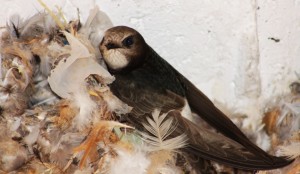
The swift pair builds the nest out of twigs, straw and feathers that are mostly snatched in flight. Photo: Thinkstock
The chicks remain in the nest a full six to eight weeks, and in bad weather even longer. Then they have to manage without food for long periods, but like the adult birds, they can become semi-torpid, a hibernation-like state that reduces all bodily functions and energy demands.
The body temperature of common swifts can drop from a normal 42°C to around 20°C. Swift chicks have been know to survive eight to ten days of no food with a weight loss of about 50 per cent. But many chicks die of cold and hunger.
Periods of torpor prolong juvenile nest time and growth, which can cause problems for common swifts in the north. Already in August, young and old need to be ready to migrate. Frost and ice do little to increase the insect availability and swifts’ comfort.
Migrating to Africa
Common swifts don’t stay up north for very long. You could say that they’re more like really faithful guests than permanent residents in northern climes.
As early as August or September the swifts will have left for South Africa. There they live as airborne nomads, always heading towards regions where rain has fallen and there are insects to eat.
Olav Hogstad is professor emeritus at the NTNU University Museum’s Section of Natural History.
